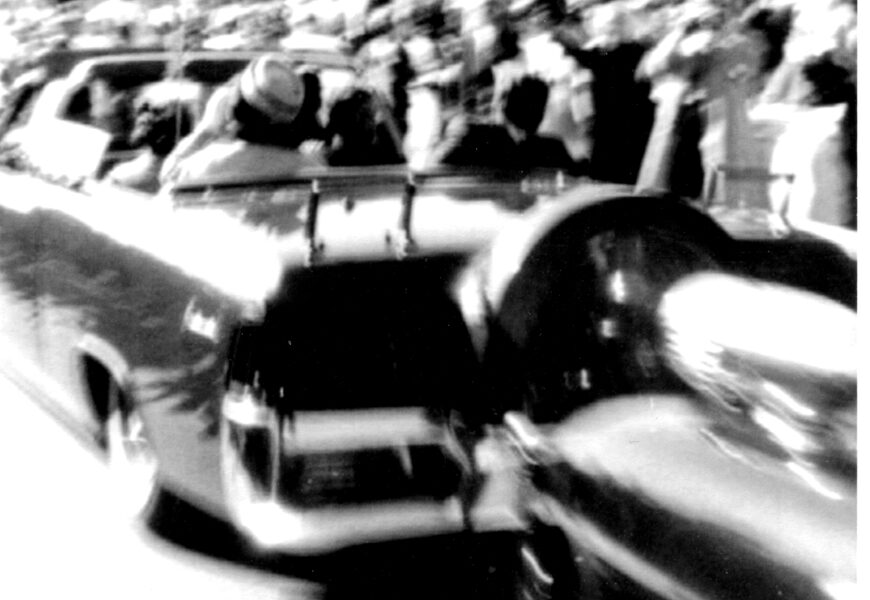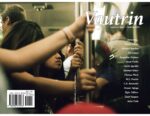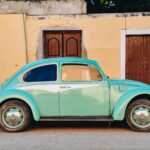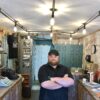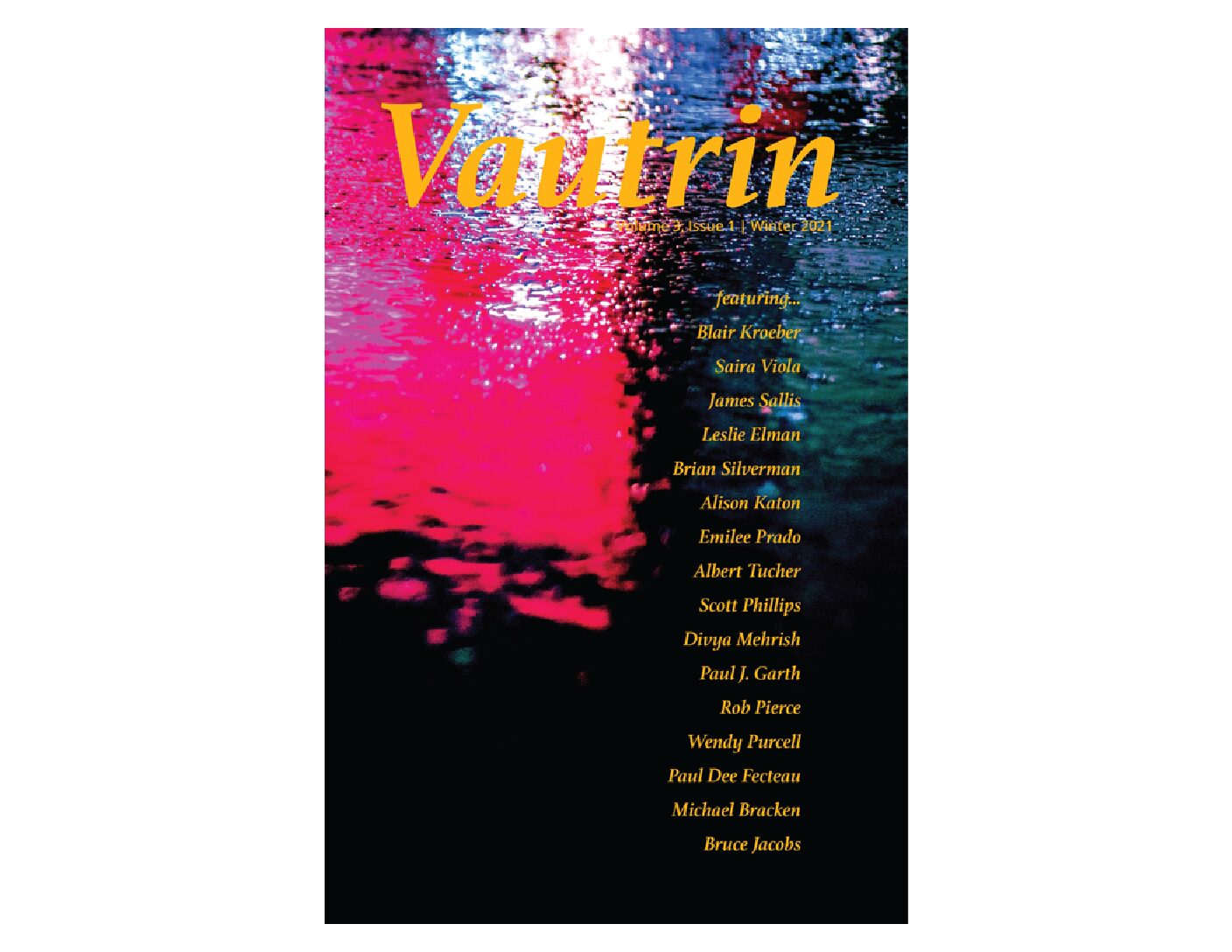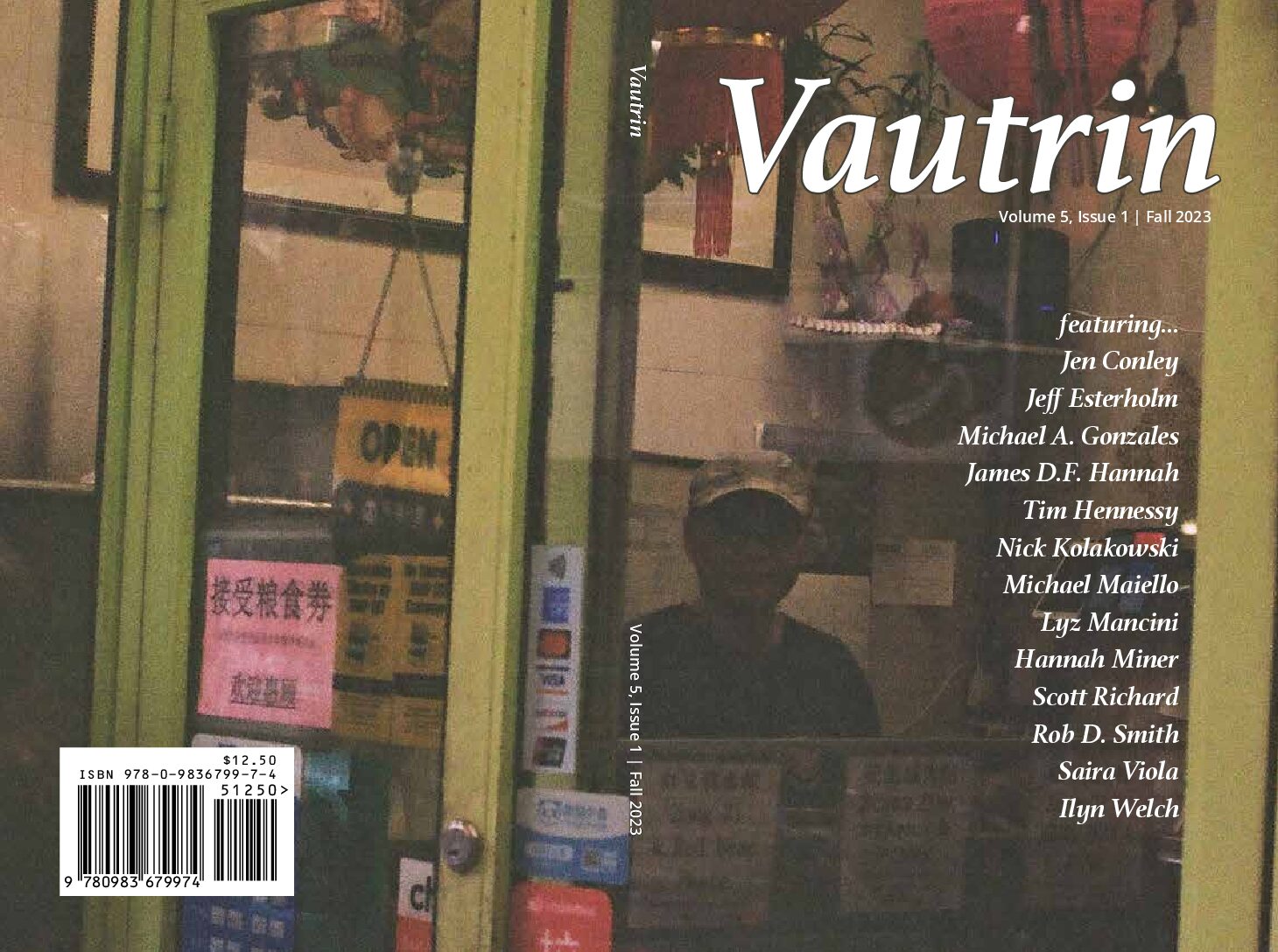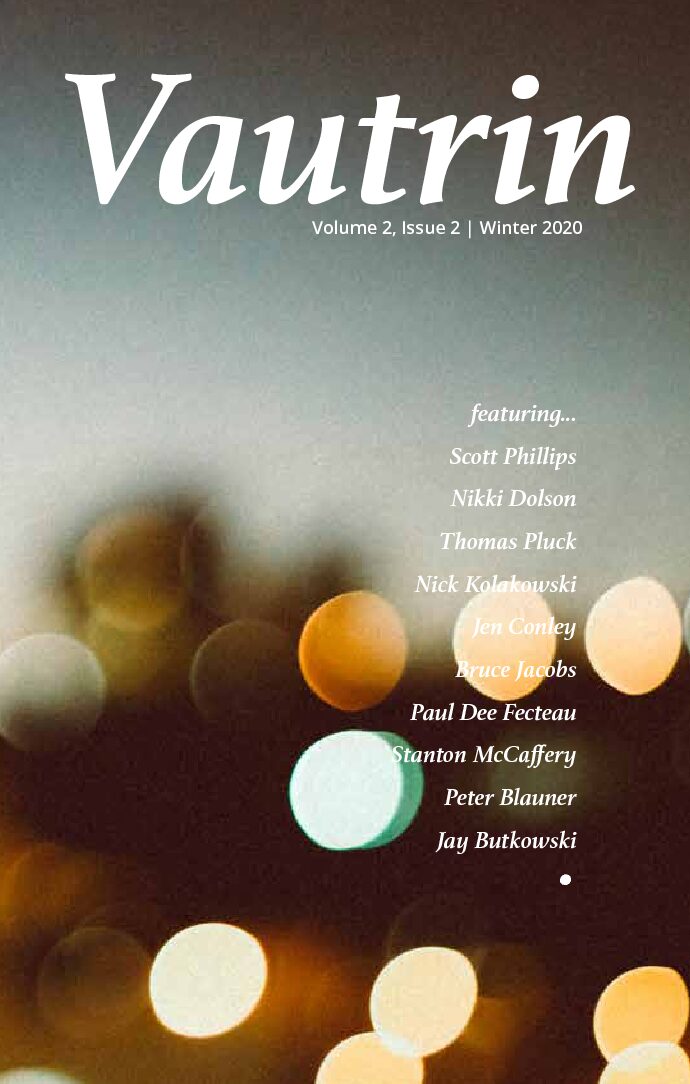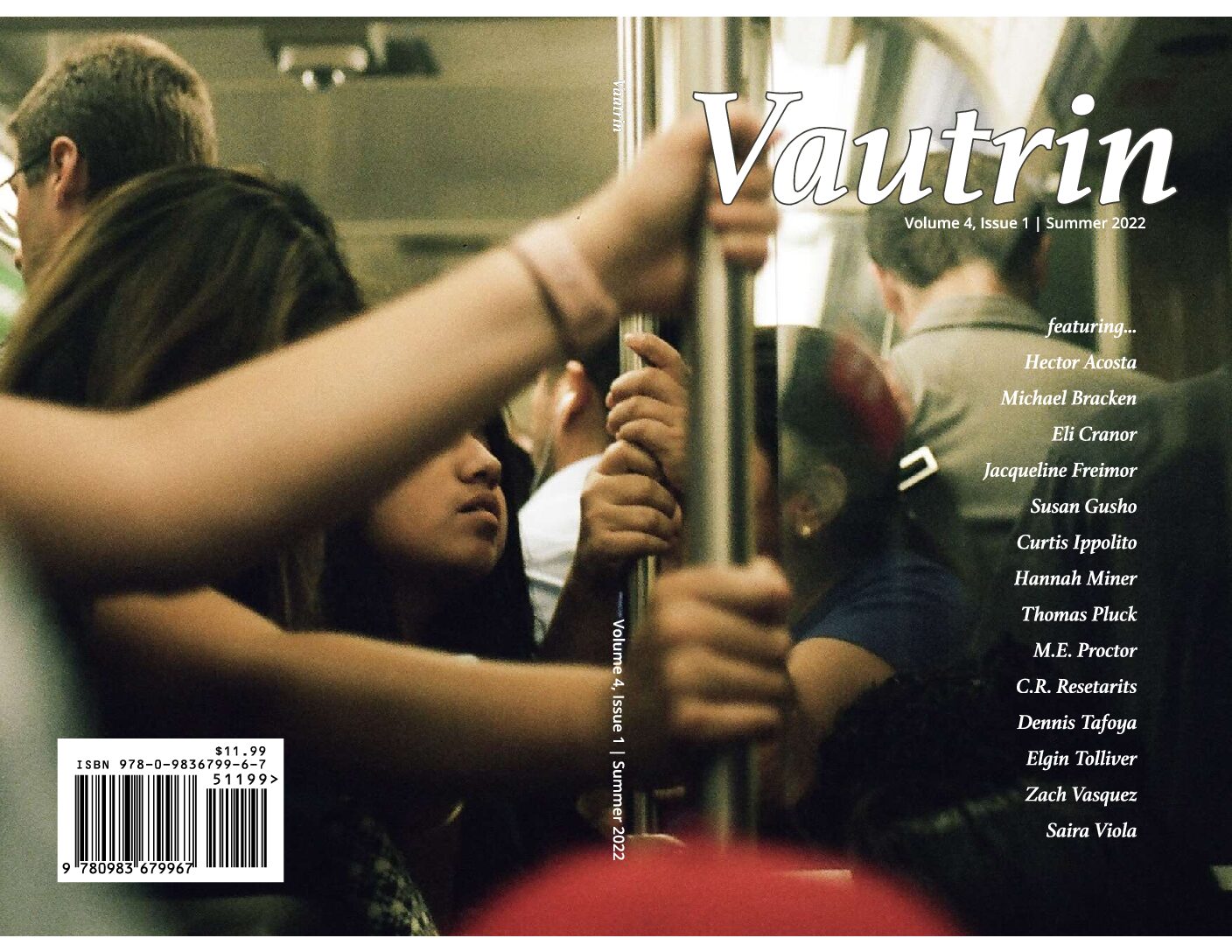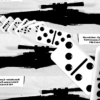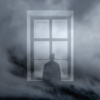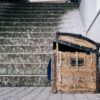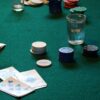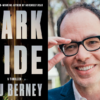Augury in the Hotel Texas (Episode 1)
Author’s Introduction:
Far be it from me to shush complaints that boomers are too much with us late and soon, remaining on the stage and at the levers of power after they should have pocketed the gold watch and gone to work on their memoirs. I dig up this old business in spite of lingering obsessions not because of them. For what I am up to here is not about romancing the end of Camelot and its discordian aftermath; rather, I want to exorcise some demons.
My first big client was a famous filmmaker who, despite having compelling input from talented researchers, couldn’t shake the feeling some deeper truth remained just beyond reach. I was brought in to apply ancient wisdom to what was even then an old mystery. In the end, none of my work saw the light of day, and I was left with a bloated bank account and an N.D.A.
Now with the former long gone, the latter is just a piece of paper in a drawer. Some lawyer would have to find it and scan it if it were to have any meaning in our digital world. Besides, the current milieu seems like the time to put whatever is left on the line.
And so I have retrieved several boxes from the basement and spent some weeks puzzling over my old typescripts along with notes for their revision and supporting documentation. This series is the result. Consider it a sordid boon now that all the famous people are dead, and you and I aren’t getting any younger.
***
Preamble:
The qabalah of Kennedy assassination research has manifested through sheer volume of words, books and books about other books, even thrice-great Thoth unwilling to count their number, amassing to form an afterimage, a ’63 made of text, accessible even now to those initiated in the mysteries, literary criticism, or mythopoeias. Some artists, psychics, and lonely people who don’t drink may also happen in. The visuals sustain the most ardor in Dealey Plaza, where the bloody event replays on a loop, endlessly it seems, but ghosts, numerous as they are numinous, hold little regard for political boundaries, so manifestations pockmark the land like craters on the Moon. One could sojourn permanently in these bespelled environs. Of course, as in dreams, mere presence, while it may yield a haunting feeling, does not alone produce insight. Layers of meaning must be sifted in just such a way.
***
Liber ‘LXIII sub figura 1
FADE IN:
INT. HOTEL TEXAS – MORNING
In Room 850, the day begins with a broadside from the Dallas Morning News, a full-page fusillade of red-baiting bullet points under the heading “Welcome Mr. Kennedy” [sic]. KENNY O’DONNELL carries a copy into the suite where JFK and JACKIE have returned from breakfast. JFK reads the advertisement and hands it to Jackie. Now she is scared, and they haven’t even left friendly Fort Worth. JFK is trying to reassure her but cannot hide his sense of dismay.
JFK: We are heading into nut country.‡
DISSOLVE TO:
EXT. STREETS OF DALLAS – MORNING
John the Evangelist is the only screenwriter getting any press in Texas these days. Rumors circulate that one of his ghost writers, John the Revelator, might have penciled in a bit role in the final scenes for John the President. The supposition starts by correctly reading numerous references in Revelation as pertaining to Rome, and it builds from there by tying The Eternal City to the Catholic Church then implicating the first Catholic President of the United States. Though the metaphorical exegesis has gotten a bit messy by this point, it links the First Beast, introduced in Revelation 11 and starring in Revelation 13, to JFK. That is, he’s the so-called Antichrist.
In the days following the assassination, new pages are air mailed from the Island of Patmos. The description of the First Beast has taken on an altered and ghastly meaning.
JOHN Q. DALLASONIAN (reading Revelation 13:3): And I saw one of his heads as it were wounded to death; and his deadly wound was healed: and all the world wondered after the beast.
The KJV has an intriguing ring in a Texas accent. At least, to some. Particularly to those who believe JFK is not dead at all. His head wound healed, he will be beloved of the world, assume control of the United Nations, take everyone’s guns, and lead the forces of Satan in the Battle of Armageddon. It is also fun to say “Armageddon” with a Boston accent.
The interpretive context for such an ill-advised reading of Revelation rests, first of all, in an appealing narrative trope packaged in a conspiracy theory, the classic “so-and-so is not really dead” formula. That twist was actually at play in John’s apocalyptic text as the First Beast was likely Nero whom it was rumored had not really committed suicide and whose return to power was imminent. Transplanting that storyline to the landscape of American politics makes particular sense for those espousing the eschatology of premillennial dispensationalism. This end-times obsessed orientation has captured the imagination of conservatives who see their liberal counterparts not as the loyal opposition but as devils. Dallas has become, in fact, an epicenter of this intense blend of religion and politics — essentially the capital of, well, Nut Country.
JFK’s use of such gentlemanly mild slang actually soft pedals the atmosphere in Big D where the Birchers have overrun the editorial page of the Dallas Morning News, and the KKK has infiltrated the DPD and in many neighborhoods the PTA. While John Q. Dallasonian seethes about the U.N., his wife wants the Supreme Court impeached for Brown v. Board, and everyone thinks the 16th Amendment should be repealed.
In the mix of the moment, the prevailing bias facilitates the twisted scriptural reading which in turn reinforces the prevailing bias, the cycle comprising a deleterious feedback loop. Each time it comes around the skies darken. The heavens yawn for counterbalance. The only thing that can stop a bad guy with mysticism is a good guy with mysticism. Although “nut county” does refer to a literal reality on the ground, that does not preclude the phrase from also alluding to an alternative in the air.
Consider Nut as an invocation of the goddess of the night sky. The ancient Egyptians perceived Her in the starry expanse, naming her NWT, scholars typically Anglicizing the transliteration as Nut, though Nuit is also common. In ways he cannot understand, JFK pays homage to Her. Even if inadvertent, his appeal to cosmic forces touches him with the hand of fate, granting the sublime power of narrative displacement. What happens next, as revealed by William Manchester, refers to what has already happened and what will happen later.
CUT TO:
INT. HOTEL TEXAS – CONTINUOUS
JFK has wholly abandoned the pretense of cheering up Jackie.
JFK: You know last night would have been a hell of a night to assassinate a President.
Jackie and Kenny O’Donnell watch as JFK extrapolates, musing rhetorically while staging physically a scene from last night in Houston.
JFK: There was the rain, and the night, and we were all getting jostled. Suppose a man had a pistol in a briefcase.
JFK makes said handgun with his hand, aims, and there follows a muffled POP, the smell of crushed atoms from the center of a star hovers over the room like the sense of foreboding does upon waking from an inscrutable dream.
JFK: Then he could have dropped the gun and the briefcase and melted away in the crowd.
As if on cue, LBJ enters the suite. He doesn’t notice the stardust all over everything. One senses here JFK harboring a fantasy of himself as a clandestine. Had he not chosen the limelight, he would be able to hide in Cold War shadows. Spies have blue blood running in their veins in these days. They sport Brooks Brother’s suits as they move through antechambers in V-shaped silhouettes. They might carry a briefcase. The pistol, of course, lingers as an artefact of dueling, the final act to be dispatched within a network of respect, a tip of a fedora and a scintilla of recompense, then to exit with an air of mystery — not just catch a bus like some silly little communist.
Inklings of extrasensory insight present themselves in symbol sets of personal significance. JFK’s are particularly well suited in that regard for he has the soldier’s solemn acceptance of fate as reflected in his fondness for the verse “I Have a Rendezvous with Death” by Alan Seeger who died fighting for the French Foreign Legion in World War I. If granted an augury that morning in Fort Worth, it makes sense that it would find expression in such a romantic style.
On the other hand, treating JFK’s imagination as precognitive actually underplays its poetic achronicity. After all, what kind of premonition is about last night? The moment stands on merit alone and if not oracular at least ranks as literary; if not prophecy, then foreshadowing. It isn’t going to be enough to save him either way. It does, however, send a message to us. All of our mundane surroundings reflect the unknowable this way. He sees ahead a rainy Texas day, but the sun will come out, leading him inevitably into a resonant darkness, that undiscovered country from which he will not return.
***
Postamble:
I have always thought that scene in the Hotel Texas would be a great way to open a movie, but there were plenty of premonitions to choose from, and I am no expert on either cinema or divination, considering how both have treated me over the years. Still, something rings indelibly true about the way William Manchester, working from his interviews with Jackie, rendered the President’s dialogue. A number of the exchanges in The Death of a President read like that to me.
It likely mattered that author and president, fellow Massachusettsans, were tuned to similar frequencies. Both earned Purple Hearts serving in the Pacific Theater. Both were erudite and wrote celebrated memoirs about their service. Manchester’s 1962 book Portrait of a President hovered around hagiographic, and he embodied the true-blue doctrinaire liberal, all in for Kennedy’s New Frontier.
Manchester’s research trip to Dallas shook him up. The thought must have struck him that he was not heading into nut country but was actually there, situated behind enemy lines in his own nation. The long days he spent tracking down sources were haunted by the realization that the majority of passersby on the streets considered themselves and those who shared their ideological orientation to be the only authentic Americans, and they were prepared to be rid of the impostures through violence. He had a nervous breakdown and was barely able to finish the book.
I didn’t know about Manchester’s struggles when I wrote the initial versions of the material now assembled above. I couldn’t help but think of them though as I blended my abandoned screenplay and book, and one rainy afternoon while hard at that enterprise, a thought appeared in my mind, somewhat of jump cut: the notebook I carried around Dallas on my own research trip. That would have been in 1988, long after the boundaries of “nut country” had become porous. My companion had been a standard steno pad with a yellowish-brown cover, and there were several like it in the box I had retrieved from the basement. At one point, I had written a D in a circle on the cover in a blue ink that had promptly smeared. I could visualize it. The problem was none of the notebooks in the box had a blue D on the cover nor did they, upon closer examination, contain my Dallas notes. I eventually removed all the contents from all the boxes and revisited the basement but all in vain. My Dallas notebook had vanished in the mist of time.
Chalk it up to the perils of research in the age before the digital cloud. Not only that, but perhaps the loss was merely sentimental. What had my sources told me that they had not told countless versions of me as the events receded even further in our memories and theirs? What, indeed? The missing notebook turned out to be but the first in a series of mysteries. As the day and the rain wore on, something nagged at me, and I finally found myself pacing the study desperately trying to dredge up some recollection about that 1988 Dallas trip. I could not.
Many of the most important witnesses were still alive then. Surely, I managed to talk to some of them. Certainly my first impressions of Dealey Plaza would have stuck with me. Yet the notebook with the circled D was my only memory, and who knows when I penned that on there — months later? I made a noble effort to get back to work. The scene in the Hotel Texas comprised part of that endeavor and may have ultimately yielded the first breach in the field of darkness that had supplanted my memories.
The night was mild enough that I had a fan propped in the window, and when I went to bed, it made a quiet, rhythmic rattle that dropped perfectly into the field of background noise. Then, just as I was about to drift off to sleep, a single memory resurfaced.
I had stayed in a Motel 6 not far from the Trade Mart. I remembered nothing of the room beyond its general shabbiness. Why, when I ostensibly had a generous per diem, I would opt for such drab accommodations posed a more compelling mystery, but I did not dwell on even that. More details were coming back to me.
I was tired as only travelers can be and in bed in no time, but before sleep took me, I heard a noise from the next room. It was not a sound necessarily associated with motels: the clack, clack, clack, ding! of a typewriter. At first, I didn’t even shift pillow positions nor dare to pull at the sheets, their thread counts almost certainly negative numbers. The typing continued, however, and eventually I found myself lying on my back and listening. The walls must have been as thin as the sheets, for the arrhythmic bursts of ta-tackity tack were loud. The machine sounded old. I had recently abandoned a Selectric for a Smith-Corona proto word processor, and I knew little about earlier models, so maybe I was wrong, but I was envisioning a manual. I could almost see it, large, black, and anachronistically shiny and new, yet its operator was a null set, and there were no other noises but typing, no creaking chair or ice cubes in a glass, just the sounds of struck keys which eventually made their way into dreams.
Which night these were, I am still not sure. Reporters, sports coats slung over chair backs, amid chaotic newsrooms, worked the letters furiously, trying to get word of the assassination into print. Authors sat in lonely rooms, bottles of bourbon next to dog-eared copies of the Warren Report, and they too stretched and pulled the language.
The final scribe must have been Manchester himself though gone so rail thin and gaunt that I wouldn’t have recognized him. He had his wooden office chair rolled back from the desk and was looking down at a pad on his lap. He wrote in longhand. The typewriter was covered with a gray cloth. Though he hadn’t acknowledged my presence, he suddenly tore off a page and held it out to me. I took it and thanked him. He afforded me the slightest nod and went back to writing. As I moved toward the door, I noticed that the calendar on the wall said November 1963.
On the landing outside, the wooden floor creaked, and the lights were dim. I looked down at the unlined paper to see he had written in surprisingly smooth cursive “the Gematria of Lee Harvey Oswald.” After folding and pocketing the page, I went down the stairs and out of the building.
Leaden skies above and gray pavement below, I walked alphabet streets amid men in dark suits and women in bright dresses, all seemingly in a hurry about something. I too seemed to have an important destination, though one that went fuzzy now and then. At first, I sought building 8 but then it was 11 and finally back to 8. I found it though, the most generic office building in America, and after crossing the empty lobby, I knocked on a metal door. An agent let me in, and another told me to raise my arms while he patted me down. He snorted, reached into my jacket pocket, and pulled out a piece of paper. He shook his head with slight amusement and considerable disgust, wadded up the page, and tossed it into a metal wastebasket. They escorted me down an empty hallway and sent me through a door without knocking.
The room was sparse and orderly but not quiet. Someone was typing at lightning speed. She sat perched in perfect posture on a metal office chair, her back to me. I approached her left side. Her hair was fixed in a glorious blond bouffant, and her burgundy sweater generated its own voltage. Her fingers blurred at the keys of a massive IBM electric. I leaned forward in hopes of seeing the document, but she turned her face toward me without missing a beat on the keyboard. She wore black glasses. Her lenses were impenetrable.
Rarely do we glimpse such a reflection of totality as to disconnect from the bonds of consciousness that hold each moment to the next. Into that breach, I was sent and went willingly, hoping to return with a script that would sell. I wound up with boxes in the basement, missing time in Texas, and dreams as psychedelic as those of any exiled prophet. I awoke in the morning, listening for the sound of a typewriter, unsure what year it was.
‡ All quotes of JFK come from William Manchester’s The Death of a President (New York: Harper & Row, 1967), p. 121.
Liber ‘LXIII vel The Gematria of Lee Harvey Oswald (Episode Two)
I returned from Dallas and began typing the screenplay before I had fully unpacked. My Smith-Corona PWP-44 hummed then made a click and a whir as it saved the text to disk. The proper formatting would have to wait. I lived in an old apartment building near the Wichita State campus and rarely left. My music was still on vinyl in those days, but after one side played, I would be too engrossed in the writing to flip it, so I worked in silence for long stretches. The calendar tacked above my desk was from 1963. I found it in a curio shop on Market Street.
One scene in particular I remember writing in an almost ecstatic state. In black and white, a rotary dial phone on the kitchen wall at 621 N. Marsalis Street, the receiver is yanked off the hook by Mary Bledsoe, 67, scowling like one who scowls a lot but this time really means it. She calls the police and unburdens herself on the dispatcher. She rented out one of her rooms this week to a young man, and he seemed nice but has turned out to be trouble, and now he and this greasy little fellow are in his room causing an intolerable ruckus, yelling at one another, and she thinks she heard something break! He was sullen all week in a very sour disposition, but she let that pass, until yesterday, she heard him in his room speaking in some foreign language, and she does not like foreigners, not one bit. His name? Lee Oswald.
I turned on the desk lamp and squinted at the blotchy Xerox lying next to the word processor. The Dallas police report was dated 10 – 11 – 63. D.P.D. officers J.C. White and B.W. Hargis responded to 621 N. Marsalis and entering the room found three men and a broken chair. The renter presented a selective service card listing himself not as Lee Oswald but as Alek Hidel [sic]. His combatant was identified as J.R. Rubenstein. The report also listed a witness, an unknown man named H.H. Grant.
My neighbors, grad students and young married couples in matching parkas, we would see each other in the hall, frowning at the mail, then smile and nod. They assumed, I assumed, I was a regular guy. None of them knew my apartment was haunted. The ghosts of Ruby and Oswald duked it out while Marina cried in the corner, their forms silhouetted by light streaming from that fissure in Dallas and in time. All the while I thrived, like some deep-sea organism near a heat vent, subsisting on radiation emanating from the broken back of the American century.
Of course, I knew by that point that the police report was a hoax. That must be why the scene I wrote is missing from the only extant manuscript of my screenplay which I found, all 126 Chicago-screwed pages, tucked in the corner of a box in the basement. My vision of Mary Bledsoe and the Marsalis Street brouhaha, events that if true would prove fabled ties between Oswald and Ruby, does still exist but only on a disk in the same box. Unfortunately, the model of PWP that I owned did not use the 3 ½ inch floppy that would go on to become standard for computers, nor even any of its larger cousins, but instead a smaller, proprietary diskette. It would take a PWP to read it, and mine has long since gone back to the unified field.
In the printed version, action begins after Mary Bledsoe kicked out Oswald without refunding the two bucks she owed him for the weekend. Her justifications for his eviction included his speaking a foreign language on the premises. He found a room at 1026 N. Beckley Street in the Oak Cliff, but there the point of view in my screenplay shifts to Marina who was staying with Ruth Paine in Irving.
FADE IN:
INT. KITCHEN — DAY
Two women have a discussion, serious but not heavy: RUTH PAINE, 31, tall and thin, her bearing spartan, and her house guest, MARINA PRUSSAKOVA, 21, girlish, hair pulled back but stray bangs aloft.
RUTH: Мы можем позвонить ему.
Marina nods, and they approach a shiny new push-button phone sitting on the breakfast nook. Ruth dials WHitehall 3-8993.
MAN (O.S.): Hello.
RUTH: May I please speak to Lee Oswald?
MAN (O.S.): Who?
RUTH: Lee Harvey Oswald, he rents a room there.
MAN (O.S.): You must have the wrong number, lady.
The women look at each other perplexed.
FADE TO:
INT. COURTROOM — DAY
Marina testifies, clad in a black dress, and flanked by men in suits, seated at a long table.
MARINA: I told him that we had telephoned him but he was unknown at that number. Then he said that he had lived there under an assumed name. I told him that this was another of his foolishness, some more of his foolishness. I told Ruth Paine about this. It was incomprehensible to me why he was so secretive all the time.[i]
PAN TO:
INT. COURTROOM — CONTINUOUS
A mysterious redheaded woman in a white georgette dress stands alone in the back of the room.
LADY DUNAMIS: Everyone in this story is keeping secrets. This practice represents the touchstone of the occult, hence the name.
She smiles and walks forward into the now empty courtroom and has a seat at the table before a stack of exhibits.
LADY DUNAMIS: JFK has hidden JCE . . .
Lady Dunamis holds up a black and white photograph of a young brunette caught on the edge of a smile.
LADY DUNAMIS: . . . has hidden NJB . . .
Lady Dunamis holds up an image of the iconic blonde.
LADY DUNAMIS: . . . and had hidden MPM.
Lady Dunamis holds up another picture, this one of a sandy-haired woman in her early 40s, eyes intense and intellectual.
LADY DUNAMIS: I will stipulate that he does not need to be all that secretive since the norm is to look the other way or even help him cover up the liaisons which are regarded as de rigueur for a man in power.
She shrugs and slides the documentation aside.
LADY DUNAMIS: Meanwhile, the DPD hides this and that as CYA. The CIA and FBI are hiding god-knows-what god-knows-why. And no one . . .
She holds up one finger.
LADY DUNAMIS: . . . longs for something to hide more than Lee Harvey Oswald.
I figured the cinemascape of the assassination needed a Serling-esque narrator to wander in and out, contextualizing. While that technique may seem exotic, you know the character: she is the impresario of situations. She wields a deck of cards that makes her the wisest woman in North America. She is also the only character in the script based upon a person that I knew personally. More or less.
I hesitate not because my memory has grown hazy. It is true I am only slowly recollecting and in a jumble the things I did and saw in Dallas in 1988, but I have never forgotten her. My regard for her bears the asterisk that I never met her in person. In those days, that was strange.
I was still in bed at ten a.m. that first morning in Dallas when the front desk patched through a call. Who knows how many times the phone rang. The night had afforded me only the thinnest veil of sleep as I contended with the noise of a typewriter in the adjoining room — not a fellow guest, as far as I could tell, just an endless string of concussions made by key striking paper. Because that clatter still echoed in my mind, the melodic voice on the line saying my name sounded soothing, and I mumbled a reply.
She laughed and said, “It’s alright if this seems like a dream to you.”
Beyond that line, and its hypnotic delivery notwithstanding, she was all business. She worked as an executive assistant for the great filmmaker and would be my point of contact during my trip. She was in Hollywood, and I was to keep her updated via phone. Then she drew a card.
“Ah,” she said, “Lady Fortitude herself.”
I saw a woman in white, garlands in her hair, as she clutched the jaws of a lion. “Strength,” I said.
“Good boy,” she concluded and then explained that I could call her at 8 or 11, Pacific Time, either a.m. or p.m. I should check in at least once a day — more if I wanted, up to four theoretically. It was on my first call to her that night at ten my time in a phonebooth down the street from police headquarters that she told me the Oswald-Ruby fight report was a hoax. “That’s been floating around for years.”
She explained that the “division,” “patrol,” and “beat” numbers on the document resemble nothing the department has ever used. The report lists the day as Thursday when October 11, 1963, was a Friday. Perhaps most tellingly, its citation of Bobby Hargis as one of the responding officers seems designed just to invoke his fame as the motorcycle escort flanking the president’s car during the shooting. Hargis was, indeed, a motorcycle cop and thus would not be responding to a call in a patrol car.
“Not bad, though,” she said, “for your first day on the ground.”
I leaned back against the glass. “What about this mysterious H.H. Grant?”
“It must mean something, but is it a joke or a clue?”
Looking back, I realize she wanted me to appreciate how those two could intertwine, but I missed it entirely. The concept would have come in most handy weeks later as the nights got long back in Wichita. How I longed to phone her, yet I held off. Instead, I wrote her into the screenplay.
PAN TO:
INT. COURTROOM – CONTINUOUS
Lady Dunamis remains seated, but the scene has darkened, and she is now holding up the tarot card STRENGTH.
LADY DUNAMIS: The Twenty-Two letters are there for you even when you’re down and out, two jobs gone, rebuffed in Mexico City, daughter and pregnant wife living with Ruth.
FADE TO:
INT. ROOMING HOUSE — NIGHT
LEE HARVEY OSWALD, part man and part twisted wire, is coiled on old chair and reading a thick book.
LADY DUNAMIS (V.O.): LHO studies letters as slowly as he reads Marx, has to in order to fix them in one place, stop them jumping around him like rabbits.
FLASHBACK TO:
EXT. ROOMINGHOUSE — DAY
Oswald stands outside, brow furrowed in thought.
LADY DUNAMIS (V.O.): The L. The H. The O. On the dotted line on the lease on Beckley Street, they reverse. The O. The H. The L. And by turning around the initials, he turns around his life.
Oswald strides confidently up the walk toward the dwelling. The house number 1026 is shown on the porch over the front steps.
LADY DUNAMIS (V.O.): This process is the gematria of Lee Harvey Oswald.
A good alias serves psychology with no more elaborate correspondence, no espionage necessary. It’s not about secrecy but identity. True, O.H. Lee sounds like a good spy name, but Oswald already has one of those.
The name Alek James Hidell, with variations A.J. Hidell and A. Hidell, appears on numerous Oswald artifacts strewn from New Orleans to Dallas, including P.O. Boxes in both cities and the order slip for the Mannlicher–Carcano. His vaccination certificate bears the signature of Dr. A.J. Hideel. The handwriting is always Oswald’s except for the signature of A.J. Hidell listed as president of the Fair Play for Cuba Committee on the membership cards for that organization’s mythical New Orleans Chapter — he makes Marina do that.
The wink at the verb “to hide” beckons study for what else it may reveal about Oswald’s extensive use of Hidell as a pseudonym. One of the catchier interpretations often gets credited to Dr. Renatus Hartogs and New York Times reporter Lucy Freeman in their 1965 book about Oswald and Ruby, The Two Assassins, though the idea was also suggested by a Times reader in 1964.[ii] Regardless of who thought it up first, the literary clue unpacks thus: Alek J. Hidell serves as a slant-rhymish almost-anagram for Jekyll and Hyde. Oswald, well read and impish, gives a nod to his creation of a dark alter ego.
The Jekyll-Hyde theory receives criticism for being too-cute by half, though some of that entwines with derision for Hartogs himself, stemming from his overwrought performance before the Commission regarding his evaluation of a 13-year-old Lee at a New York reform school. He testified he had labeled the young delinquent dangerous! Except the report he wrote at the time never used that word nor said anything particularly prescient. The Two Assassins book that followed seemed a bit of shameless profiteering. Hartogs then got a second 15 minutes of infamy in 1975 when he was barred from practice for using his psychiatric couch for non-psychiatric purposes. The female patient, to whom he paid a handsome settlement, wrote a book. She got Lucy Freeman to be the co-author.
Entertain the possibility, sources and methods aside, that Oswald consciously constructs a magickal persona or whatever term he uses if he uses any term at all. Hidell the Spy hides in plain sight, all while Oswald rubs elbows with pedestrians who have no idea that they traverse the path of an operative. The problem with this formulation lies in the fact that Oswald does that already. He makes no pretense of playing Ozzie to Marina’s Harriet. Oswald the former defector who just might be KGB or just might be CIA, that is Oswald and only a persona in the sense that all of our identities are masks in one way or another. He is Mr. Hyde. There’s no Jekyll around anywhere.
LADY DUNAMIS: Besides, consider the wicked Occam’s razor that Marina wielded so skillfully before the Commission.
CUT TO:
INT. COURTROOM — DAY
Marina testifies, clad in the same black dress but flanked by different men in suits.
MARINA: When he was interviewed by some anti-Cubans, he used this name and spoke of an organization. I knew there was no such organization. And I know that Hidell is merely an altered Fidel, and I laughed at such foolishness. My imagination doesn’t work that way.[iii]
Lady Dunamis walks in front of the table. The men in suits take notice.
LADY DUNAMIS: Sorry, Marina, but Alek Hidell abides in many forms to this day. Flip through enough JFK assassination books and soon enough, he will slip down the alley in a series of ayin-shaped shadows.
Marina gives her the finger, and Lady D. shrugs.
Certain versions of the “Harvey and Lee” conspiracy theory propose that Hidell was a real person, a Russian working for the CIA. Proponents of this hypothesis read Oswald’s biography as a composite of two men living as Oswald at various times and in various places. The Russian Hidell was one of the two. Of course, Hidell might just as well have been the Russian’s alias.
LADY DUNAMIS: A few steps and we find ourselves not far from theoretical ground traversed by doppelgängers and tulpae.
In fact, the Hidell legacy arguably retains more resonance in the realm of culture jamming than among the ostensibly earnest research community. The nom de plume Al Hidell was employed by an author who penned (along with co-writer Joan D’Arc) a series of anthologies on conspiracy theories, the tone of these articles veering between a wink and smirk. This spirit of mockery shows no sign of diminishing in the digital age: there are presently dozens of Alek Hidells on Twitter.
Via the adoption of his alias, Oswald seems to have created a hypersigil decades before Grant Morrison popularized the concept. As a sigil entails a design or logo that operates magickally, a hypersigil allows such a creation to become fluid. In Morrison’s case, he created characters in graphic novels that acted as his avatars. Just as his King Mob allows an alter-ego to flex and jibe from the printed page to the reader’s psyche, Oswald’s Hidell manifests through contrarian mythopoeia and discordian pranks. The best example of the latter occurred in the Ft. Worth cemetery where Oswald is buried: several yards from his grave there appeared a simple marker flat on the ground bearing the single name HIDELL. When brought to the attention of administrators in 2019, the stone was removed.
The suggestion that Oswald may have inadvertently brought Hidell to life creates a paradox. The key to sorcery in general, and to sigilization in particular, is intentionality, yet Oswald drifted in a daze of delusion. His magick and his madness travelled on the same wavelength of secret codes — cloak and dagger and assassin’s rifle — until the universe itself was not quite sure if he was joking.
It turns out that it matters little whether in the spirit of quip or of exhortation. The act of communicating the thought from one to the great multiplicity animates the machinery of manifestation. My first hint of this proposition filtered through my final conversation with the woman clothed in the cinematic garb of Lady Dunamis. She asked me about the image on the strength card. I offered up the obligatory observation that the lady in white held shut the jaws of the lion. Lady Dunamis played the film backwards. She opened the mouth of the great beast and bade it speak. Rejoice if it roar with power. Weep if it cry out in pain.
On Beckley Street, the nights stretch on toward a dawn that’s no better than an afterthought. In those empty hours, Oswald sits in his white t-shirt, fingering his battered copy of Das Kapital, hardly any regard for his fellow boarders who dream in the surrounding rooms. He is struggling to come to terms with the most resonant echo in his current alias, the name O.H. Lee which so far has only served to foil Ruth’s attempt to phone him. He hears the lamentation in the voice of his mother and then that of Marina: OH Lee, as in “Oh, Lee, what have you done?”
NOTES:
[i] The President’s Commission on the Assassination of President Kennedy, Hearings, Vol. 1 (Washington DC: US Government Printing Office 1964), 46.
[ii] “An Oswald Alias Seen as Anagram,” The New York Times, November 1, 1964.
[iii] The President’s Commission on the Assassination of President Kennedy, Hearings, Vol. 1, op cit., 64.
Liber ‘LXIII vel The Tarot of Love Field (Episode Three)
I remember hanging up the phone in a cheap Dallas motel room but not feeling disconnected, the voice of my point of contact somehow still reverberating. This woman who represented the great filmmaker linked me to a wider field, one I now had clearance to traverse. I was in league with people who opened doors others wanted to remain closed. There were secrets, and then there were secrets. She had been talking about the tarot, after all. Of course, just like Lee Harvey Oswald in his Beckley Street apartment, I was alone, surrounded by rooms of strangers, and with only a book for company. My book, however, was really 78 books in one.
That night, I dreamed about JFK’s arrival at Love Field, and I swear I dreamed in color, seeing here and there in splashes of gouache. The resonant details would evaporate by dawn, but my guess is when I wrote about the actual events in my screenplay, some of their quality survived. Or it could just be a matter of history. People who were there have said it was spectacular.
FADE IN:
EXT. LOVE FIELD — MORNING
Air Force One sits on the tarmac in the background, sun glinting off the fuselage, golden light the tenor of the moment as a massive crowd greets the PRESIDENT and FIRST LADY. At the heart of the splendor, Jackie wears a double-breasted pink suit and matching pillbox hat. The MAYOR’S WIFE, a couple decades older than Jackie, hands her a dozen red roses. JFK looks like he always does. Together he and Jackie look like they will live forever along with the swarm of well-wishers, clad variously in dresses and dungarees, who greet them. Forget the rough country where cowboy hats and a crowd bespeak a hanging, for this Dallas has beaten the swords into cameras and trained the lens on a future worth photographing.
Though every heartbeat is another heartbeat closer to the final heartbeat, we find balm in the correlation of lived experience and transcendence. In that sense, longing to hold on to those evocative moments could itself be considered an odd variation upon oracular activity as our celebrations must embrace their own ephemerality.
I think the roses were big in my dream. Jackie was, I recall, given red because with the pomp of a presidential visit, the florists had sold out of yellow roses. But of course, the color had to be red, red conveying ardor, the heart of the mystery of the rosy cross and several other symbol sets of far greater resonance than the jingoism of the yellow rose of Texas. With those red blossoms against the pink of her suit, Jackie arrived as the Rose of the Palace of Fire. She was the Princess of Wands, that day not her last.
Despite its vibrancy, I initially dismissed the impact of my Love Field dream. Afterall, lush color photography of the President’s reception abounds and comprises memorable enough material to seep into one’s sleep, so I did not pause. In fact, I think I was soon out the door of my cheap room that next morning. To where, I remain not so clear. On that point my memory blockade persists, and my Dallas notebook has never turned up. I am left pulling threads of various colors.
It makes poetic sense, and as far as I know does not violate a logical chronology, to suggest that this was the day, I wound up in a basement repository the reporters at WFAA affectionately called “the morgue,” viewing two-inch quadraplex tapes of the station’s coverage of the President’s arrival at Love Field on a bulky CRT television. This footage flickered in black and white.
EXT. LOVE FIELD – BLACK AND WHITE:
JFK and Jackie move down the rope line shaking hands and saying hello, appearing in no hurry. A row back amid the throng, a LOCAL REPORTER, bearded but still youthful, watches intently. Finally, he flips open his notebook and jots:
Kennedy is showing he is not afraid.
In the background, the motorcade is also moving despite the two empty seats in the Presidential car, pacing JFK and Jackie so as to be there waiting as soon as they turn away from the crowd. It’s efficient, and there are appointments to keep, after all.
When JFK and Jackie finally board the limousine, the view of the motorcade switches to a camera positioned higher and behind the phalanx, the black and white image a little more washed out. Two men in dark suits jog alongside the Presidential car, one on each side with a hand on the rear fender. A man in the follow-up car stands up, and the two look back to him and then step away from the limo.
The agent on the far side where Jackie sits is recognizable. That is Clint Hill, and in about 45 minutes he will be famous. The other agent, younger in black shades, is unknown. Hill climbs onto the running board of the follow up car, but the mystery agent continues walking backwards alongside for a half dozen steps, extending his arms to shrug twice. He stops, shrugs once more, and walks away toward the terminal.
I rewound that scene several times, fascinated by the behavior of the man researchers had come to refer to as “the Shrugging Agent.” He eventually earned himself a place in my conspiracy tarot deck as a variation of the Hanged Man. Suspended as a traitor, he gained a new perspective. Me, he left with only questions. It sure looked as though something in the protective detail’s plans had gone awry.
When WFAA eventually kicked me out so someone else could use the old machine, I went back out onto the streets of Dallas and walked down Record Street toward Dealey Plaza. The overcast skies, leaden but no breeze, no doubt abetted my sense that I moved through a black and white landscape, jostled by foot traffic in sigma-shaped tilts while cars idled endlessly. When one wears the cloak of film noir, every stranger has potential.
I did eventually learn with very little clandestine action that the assassination mekubbalim who sift the meanings IDed the Shrugging Agent as Henry Rybka. The deduction was based upon a report written by Special Agent in Charge Emory Roberts, the man in the follow up car who stands up to tell the jogging agents to fall back. Roberts noted that he had mistakenly listed Rybka on the duty roster as part of the motorcade. Rybka’s reaction to being ordered away from his position just a few feet behind the President made it appear, at least, that he was in the dark about this mistake.
The copy of my screenplay which I found in the basement contains a scene with the agent named as Henry Rybka. The implication saturates every stage direction. There was a stand-down order. An agent who could have been in position to intervene once the shooting started had instead been sideline, pointlessly cooling his heels at Love Field.
It tuns out, however, that one can’t always trust the assassination mekubbalim – or me, for that matter. In the intervening years, Clint Hill has attempted to set the record straight. According to Hill, the shrugging agent is actually Don Lawton. I did not read Hill’s book, but there is a video of him on the C-Span website talking about the Shrugging Agent. Hill, in fact, proclaims that nothing in that footage depicts anyone receiving a stand-down order. Special Agent Lawton was supposed to stay at Love Field and prepare for the President’s return. Agent Rybka had, as Roberts’ report indicated, also been assigned to remain, and he is not shown in the film clip at all. Lawton, on the other hand, is with the motorcade as it heads to the airport exit. Roberts signals as the motorcade prepares to pick up speed, and Hill pulls back to the follow-up car. Lawton steps aside but before he heads to the terminal, he banters with the agents in the follow-up car. He extends his arms, makes a face, and crows how he’s going to lunch, they have to keep on working, but he’s going to lunch.
I have stopped re-researching the details that appear in my script. God only knows how much else is wrong. At some point, though, the concept of exactitude peels away, and meanings collapse into the image of the agent in the black and white, and his form with arms outstretched becomes a sigil of regret. Lawton jokes with his fellow agents in a world where protecting JFK is all in a day’s work. Or Rybka registers his protest against the failures of supposedly righteous men. Either way, the shrugging agent/the hanged man persist, reminding us that when we return to Love Field, we will no longer be the same.
Yet even as events transform us, remnants of prior visions and meditative discursions bob and nod through unfolding days. Once I left Dallas with its black-and-white filter, some color returned though only here and there. For the most part, Wichita had the same noir cinematography for me as I typed away on my word processor hours upon end in my apartment. I could at moments revel in the thought that my fellow tenants had no idea that their neighbor possessed the rarest of insight on the crime of the century, yet at other times, it occurred to me they likely wouldn’t care.
There was an exception to the latter in the one friend I had in the building. This guy named George worked as a copy editor for The Eagle-Beacon, and they kept him busy, but we would go for coffee every so often. He aspired to be an investigative reporter and would have been fascinated with my work. Who knows but he could have ventured a helpful comment or two, but of course, I held to my contract and maintained silence. He thought I was writing a novel.
One night, after I had switched off the Smith-Corona but was still sitting at my desk, a bit dazed perhaps by my solitary routine, absently thumbing over a collection of key reference texts that sat on the nearby shelf, the Love Field dream suddenly returned to the fore. I happened to take up Liber 777, that veritable Enigma machine of comparative religion, and flip idly through the innumerable Tables of Correspondence that paired cross-cultured symbols of every time and place and texture.
The tattered old book flipped open to a page down which ran columns XV and XIV depicting the tarot attributions associated with the color scales of The Hermetic Order of the Golden Dawn. Thereupon is recorded that the shade “clear pink rose” corresponds to the tarot’s 6s. The color and indeed the phrase itself immediately made me think of Jackie Kennedy in her Chanel dress. I was suddenly back at Love Field, and as the crowd surged around me, I was holding four cards.
That the color should send me shuffling into memories and dreams and fantasy makes sense in the context of my research. After all, in some ways, Jackie’s dress is the most iconic image of her husband’s murder. The wool garment made her the still-point of the turning world at Love Field, its vibrant color pinpoint amid so many men and planes, all in blue and black. Hours later, she continued to be the epicenter of that moment of history when she refused to change.
That “clear pink rose” should link to the tarot nudged me on further psychic detours. The six of cups came first to mind. I knew the cards, specifically those drawn by Pamela Coleman Smith in 1909, not so much like the back of my hand but maybe more like my elbow, and I knew one depicted a gift of flowers. That thought conjured Love Field where Dearie Cabell, the wife of Mayor Earle Cabell, greeted Jackie with roses. A deck was there in the desk drawer. I located it under a pack of incense. I took it up, hunted through it, and soon enough had the four 6s before me on the blotter. Slid this way and that, that way and this, no regard for any tables of correspondence or other predetermined orders, they formed narratives. I found one I liked and grabbed a notebook.
******The Six of Cups.
A boy extends a vase containing a single flower. A girl reaches out to take this gift. Their exchange is at once a scene of innocence in a garden setting and additionally the linkage that exists between past and present.
Jackie accepting a bouquet of red roses to adorn her pink dress constituted an Edenic scene in the sense that all were about to be cast out, no way to rewind and undo what was coming. Yet the image held even as those roses ended up in a heap on the floorboard in the back of the limo. Various Dallas police grabbed themselves one (or in the case of the Chief, two) and these remain in private collections even today.
******The Six of Pentacles.
A wealthy man gives alms. Wearing a burgundy cloak, his head wrapped in a crimson turban, he drops a handful of coins to a kneeling man with his right hand and holds a scale in his left. His evident social standing suggests more than personal largess but perhaps an institutional spirit of community.
Kennedy’s New Frontier included hefty social spending and economic reform to combat poverty. Those assembled to greet him that morning likely more or less embraced a liberal vision for society. Of course, such an approach did not sit well with everyone. Though the bulk of the “Welcome Mr. Kennedy to Dallas” ad that ran in the Morning News that day dealt with foreign policy, the aggrieved also plugged their city as “an economic ‘boom town,’ not because of Federal handouts, but through conservative economic and business practices.”
******The Six of Wands.
A man crowned with laurel leaves rides a white horse. He holds aloft a staff with a wreath affixed at the top and is cheered forward by a crowd of admirers. This celebration itself serves to further establish the hero as victor in the eyes of the populace.
The warm reception at the airport continued as the motorcade took its circuitous route through Dallas, cheering crowds on either side. Highly valuing such opportunities to make eye contact with voters, JFK was in his element. Governor Connelly’s wife Nellie turned and said, “Mr. President, you can’t say Dallas doesn’t love you.” He agreed and continued to gaze at the people lining the curb. Through them, he could see all the way to re-election.
******The Six of Swords.
Three figures, all with their backs to us, float away in a gondola. The gondolier stands in the back, piloting from rough water toward calm in the distance. His passengers are a woman wrapped in a cloak with a child nestled against her. Land is on the horizon, presumably their destination. This travelling represents a necessary movement from past to a future.
Jackie rode in the jump seat in the back of the white hearse that carried JFK’s body back to Love Field. Most of the members of the motorcade had already reassembled there by that point, LBJ having left Parkview Hospital over a half hour earlier. She, in fact, assumed he had already gone back to Washington and was surprised to find him on Air Force One. He insisted she be present when he was sworn in on board, and she agreed, but refused to change out of her blood-soaked dress.
******
Midnight passed as I looked at what I had written. The film noir soundtrack receded over Hillside, and my apartment grew quiet. The dark corners now hid only the archetypes of the unknown of which the Shrugging Agent was one, and I could see Love Field in Pixie-vision color. In some ways, it was the first calm moment I had since starting the project. I also suspect that was the exact moment my memories of Dallas began to slip behind a veil which is only now and only partially being parted.
I turned in but was then hit with a final hypnogogic burst. The slender wooden craft split rippling water, and I knew the veiled woman gazing seaward was Jackie. Caroline and John Jr. huddled at her side. A brisk wind stung my eyes, but I kept them fixed in the distance and the looming silhouette of the mountains of Greece.
Liber ‘LXIII vel the Oswald Hypersigil (Episode Four)
My ex-wife phoned a few days ago. Usually that means she needs a pep talk, but this time the focus wound up on me. “Wait,” she said, “you’re still messing with all that old conspiracy stuff? It’s been months.” Deflection proved ineffective, so I told her about the missing notebook and then eventually about my missing memories. “That’s nuts,” she said, and I agreed, and the conversation meandered elsewhere. It circled around though just before we hung up. She told me how and an old friend of ours who is a sculptor is having a show at the university gallery in Wichita Falls. I should get my mind off JFK, take a weekend, and go down there. It would do me some good.
Half-heartedly, I considered her suggestion later that evening, drinking a cup of valerian tea and visualizing myself getting out of town. This train of thought ultimately led not away from my research but back toward it. It suddenly struck me that my visit to Dallas in 1988 might have included a side trip. My reflections continued over the course of the night’s sleep, including some restless moments lying awake as memories sparked and fizzled. Suddenly a burst of fireworks.
INT. OFFICE – DAY
LADY DUNAMIS, clad in gray business attire, red hair up, looks out through a high-rise window over the L.A. skyline, a large red cordless phone held to her ear.
LADY DUNAMIS: I think you should take a trip down there. Getting out of town would do you some good.
That was how, at some point before dawn, I finally came to remember Alice.
FADE IN:
INT. RADIO STATION – DAY
One MAN sits behind a reception desk while another MAN leans on its counter, the logo of
KOPY 1070 AM
Alice, Texas
affixed thereon. A CAR can be heard pulling into the lot out front, so Man #1 goes and peers out the window.
MAN #1: We expecting someone?
MAN #2: Nope. Wait, someone said a guy came by last night looking for a job.
MAN #1: Probably our boy here. Beat up old sedan, man getting out, woman and a little girl staying behind.
INT. RADIO STATION – CONTINUOUS
CUT TO POV:
We see over the shoulder of the man who enters the reception area, catching just the outline of knit pullover, white shirt collar, and brown hair.
MAN #1: Hey, pardner, you can bring your family in too.
MAN #3: Thank you, sir, but my wife doesn’t speak English.
MAN #1: Alright, well, what can we do for you?
MAN #3: I would like to enquire about employment, sir. I have a background in electronics, and I was recently returning from a visit to Mexico and was listening to your station, and it got me thinking, maybe I might talk to someone about working here.
MAN #1: That would be me. I am the manager, Sonny Stewart, but I’m afraid, I don’t have any openings at the moment.
MAN #3: I understand. Would you have recommendations for other stations that might? I am really interested in the work.
STEWART: Offhand, I don’t recall hearing of any.
MAN #3: Is there a station in Pleasanton?
STEWART: Yep, KBOP. I suppose it couldn’t hurt to check there.
MAN #3: Thank you, sir. If you get the chance to pass along a good word for me, my name is . . .
CUT TO:
INT. RADIO STATION – DAY
The POV swings around to reveal only a shadowy cut-out of Man #3.
MAN #3: . . . Lee Oswald.
Sonny Stewart told a reporter for the Corpus Christi Caller that his encounter with Oswald had taken place on the afternoon of October 4, 1963.[i] Alice is a little town about 400 miles the other side of the looking glass from its rhyming partner up north. Technically, one might say theoretically or perhaps hypothetically, the accused Presidential assassin could have been the one at the station that day, but it was very unlikely, wholly improbable, almost impossible.
Oswald’s disastrous Mexico City trip, during which he was turned away from both the Cuban and Soviet embassies, ended on October 2, when he took a bus north, crossing into the U.S. and returning to Dallas in the early morning hours. On October 3, he got a room at the Y and visited the unemployment office to file a claim. That evening, he could have driven the 400 miles south, popped into the station, and been told to come back during business hours. On October 4, however, Oswald completed a job interview with a printing company in Dallas then hitchhiked to Ruth Paine’s house to see Marina and their daughter June. Paine stated that he spent the night there.[ii] This chronology does not allow for yet another a jaunt down to Alice. Add one small, additional complication: Oswald did not drive. At least, he had no license, and Ruth had been giving him lessons. He was just starting to get the hang of it, she said.
It turns out, however, that the KOPY visit amounted to just one of over a half dozen occasions when Oswald was sighted in South Texas in October. Other station employees had seen him there on the night of October 3, and there were two additional sightings in Alice on uncertain dates and a couple in nearby Pleasanton to go along with ones in San Antonio and Corpus Christi. A man also claimed to have picked up Oswald hitchhiking near Leming on October 5. Meanwhile, Oswald resided in Dallas where his comings and goings made it next to impossible any of these incidents had really involved him. It was almost like two of him came back from Mexico City.
Perhaps an international border, like any liminal space, can facilitate not only the expected traffic but sometimes certain kinds of anomalous travel involving people going where they couldn’t, shouldn’t, and didn’t. The concepts of here and there present so starkly as to invite us to tousle them, a playful thing to do though only while whistling past the other operant status — nowhere. Perhaps something along these lines came into play in South Texas where it suddenly seemed that Oswald was everywhere — until, of course, thanks to Ruby, he was nowhere.
Oswaldmania held sway in Dallas too. The Warren Commission took testimony from employees who claimed to have served him at Hutch’s Market, Clifton’s Barbershop, and the Irving Furniture Mart in the weeks leading up to the assassination. He zipped around the city in cars of several different makes and models. One witness said the man he encountered usually wore a twill jacket and no tie[iii] while another recalled Oswald preferring coveralls and yellow house shoes which he said he bought in Mexico.[iv] He was seen in the company of a fourteen-year-old boy[v] and another time with an elderly woman in a fur coat.[vi] His hair was usually combed straight back, but sometimes he wore it long. It was as though citizens all had their own personal Oswald lurking somewhere in their imagination, managing to repulse even as he fascinated, the one commonality being that he wasn’t very nice.
Prior to my trip, I had pondered the numerous Dallas sightings as many researchers had. The bulk of them must have involved mistaken identity. The historical magnitude of the assassination triggered a tendency in people to claim a personal stake in the notoriety, and so some stranger who had crossed their path was transformed into The Assassin. It seemed telling that a number of the reports claimed Oswald was shabbily or bizarrely dressed and that he was rude. The real man was remote but generally civil, and his wardrobe in public modest but neat. The mistaken witnesses’ descriptions probably owed more to their view of leftists as wacky and threatening.
Some witness accounts, however, were too intriguing to merely dismiss. A series of Oswald sightings took place at The Sports Drome Rifle Range in Grand Prairie, about a dozen miles west of Dallas, starting in late September when Oswald was in Mexico[vii] up until five days before the assassination.[viii] Marina remembered him saying he was going shooting sometime in the spring, but investigators could not confirm his appearance at the Sports Drome in the fall.[ix] Some of these witnesses might have actually seen Oswald, and some of them could be mistaken too, but researchers have raised a shadowy third possibility: an imposture. The double engaged in highly incriminating behavior — specifically, target practice.
The motives for other appearances by the Oswald clone seem more opaque. Car salesman Al Bogard reported that he rode along on a test drive with a man who said his name was Lee Oswald. The test drive took place on Saturday, November 9, when Lee’s activities were accounted for by Marina and Ruth.[x] Bogard’s customer drove a Mercury Comet seventy on the Stemmons Freeway, hardly slowing for curves. He clearly had the hang of it — in fact, it was almost as though he was demonstrating his proficiency. He didn’t buy the Comet but said he was about to come into some money and would then return. Two other salesmen in the office also recalled the car-shopping Lee. One of them remembered him reacting to the prospect of a credit check by joking, “Maybe I’ll have to go back to Russia to buy a car.”[xi]
Despite wayward hours mulling these impossible Oswald sightings, I couldn’t come up with a practical explanation. Others had more luck. A guy named John Armstrong tracked conflicting accounts of Oswald’s activities that spanned his entire life and ultimately concluded there must have been two men, one he referred to as Harvey and the other as Lee, one the product of an intelligence operation and the other an unwitting patsy. I couldn’t top that, but on my Dallas trip, I sought to conjure an explanation mystical enough to at least interest my employer.
I wondered what if via his own compulsive mysteriousness, Oswald managed to create a hypersigil that very shortly replaced him on this earth, and that unmoored thought-form generated an open-source energy any individual psyche could tap. Nobody so much as set out to create an Oswald tulpa: assassin in a box — just add one’s own sense of connection to history, shake well, and presto — but with the necessary ingredients gathered by fate, they were unloosed into the methane-laced ether of the Lone Star system, a veritable mob of Oswald tulpae, snootily ignoring us on the street corner, scowling in some dim corner of our favorite restaurant, blowing like tumbleweeds across the two-lane and right into that sleepy little town we call home.
This theory of mine wasn’t one that would readily submit itself to falsification, but I sought to try. My memories have only hazily realigned, so I can’t be sure how it came about, but I settled upon South Texas as the proving ground. I don’t think I knew about those October sightings down there before I went to Dallas, for I seem to recall late one night in my room at the Motel 6 looking for something unrelated in my copy of the Warren Report — a hardback published by the Associated Press, its spine gone loose — and in the section titled “Other Rumors and Speculations,” Oswald’s alleged visit to radio station KOPY in Alice was covered briefly and summarily debunked.[xii] The next day, I walked from Dealey Plaza down Commerce Street to the Central Branch of the Dallas Public Library, looked up where Alice was and found an article in which Sonny Stewart was interviewed about his encounter with job-seeking Oswald.
Sonny’s account bordered on the poetic. He recalled seeing Oswald on TV and being overcome by an uncanny sense of familiarity.
STEWART: It was kinda like a song that you can’t remember the name of.[xiii]
Flashbulb-flickered black-and-white footage of Oswald in police custody, a cut over his right eye, showed him cascading down crowded corridors, looking stymied under bright lights as reporters shouted questions. The scene had all the reflex and reverb of an enchanted sonata, and the radio man remembered.
Haunted tunes and haunted people have a complicated relationship with language, a dynamic that would ultimately make my experience at KOPY less than magical. I arrived, weary from the long drive, and studied the sign outside a squat brick building a few miles south of Alice on the Falfurious Highway. A logo painted on the façade displayed the call letters and the name La Verdad next to a depiction of very somber yet sage Jesus above the slogan Estar Hecho un Cristo. The young lady at the front desk had auburn hair and spoke pretty good English, but in the end, she could only say that she had never heard of any of the people I was talking about.
Another of the three Alice sightings had taken place at a site on the way back into town at the intersection of Falfurious and Hill Junction, but the Hill Machinery Company had given way to a strip mall. My disappointment was not that pronounced because the incident there had seemed the most resolved as far as the coverage in the papers. A clerk named Leo Supulveda reported that, though he was uncertain of the exact date, in October a man whose name was Oswald had driven into the lot, left a woman waiting in the car, and had come into the shop and filled out an application. Sepulvada remembered the name on the document and that it mentioned service in the Marines.[xiv] The FBI searched the trash and could not find the application. At least, Mr. Sepulveda’s account derived from more than merely matching the Oswald on TV to a figure in his memory. That construct bothered me about the KOPY sighting. The article covering it was not clear but gave no indication Stewart had ever written down Oswald’s name. It was too easy to dismiss his account like those of the many Dallasonians who had most likely simply been mistaken, questions of identity being illusive on a flickering black and white screen as opposed to black ink on white paper. I drove on into town, fatigue accruing, and began looking for a motel.
The big chains were all in nearby Kingsville, but I sought the first opportunity which I guessed would be heading west on Highway 44. Nothing turned up, and the outskirts dwindled surprisingly quickly. The drive through the countryside seemed to be clearing my head, so I kept going, eventually rounding a bend in the town of Freer and there waited Freer Motel. For some reason, my memories about that place have resurfaced and are quite striking.
A carport angled off the office, and I pulled in the rental car. A neon sign in the window featured a fidgety cursive that looked like it read WAC ANCY. I went in through a glass door and stood at the counter before a little silver bell which I eventually dinged. A man appeared almost instantly. He was pushing sixty, had scraggly white beard, and moved with a shuffling ease that seemed carefree. He wore a black t-shirt with The Doors logo emblazoned across the chest. He smiled broadly and said, “Good to see you again.”
I returned the smile but let it fade into a quizzical look. “Again?”
“Haven’t you stayed here before? No, well, I’m sorry. I see lots of people, and sometimes they get jumbled up in my mind.”
“Of course,” I said, and he put me in number 9.
The room had wooden wainscoting and teal walls, paintings of western landscapes, and an old white coffeemaker. Certain scenes there come in clearly but without sequence. Presumably much later, I sat in a green armchair, making myself a screwdriver with a pint of vodka and orange concentrate, not a typical enterprise for me. I had gone out for food and something had shaken me up. Back then, I did not know about the waitress in Freer. I don’t think anyone did, except the FBI.
I found myself sitting in a booth and looking out the window of a diner. The street was empty but still looked to be Highway 44. Painted on the plate glass was The B. & F. Café. Such a setting should have fostered that sense of ease and expectation — the aroma of home cooking in a place to dawdle. Instead, something seemed slightly off. Somehow all affect flattened.
INT. DINER – DAY
FADE IN:
We see over the shoulder of a man sitting in a booth. Perched on the red vinyl seat across from him is a young woman with hazy, distant eyes and dark hair pulled up with a few strands loose. It’s MARINA.
MARINA: Можно нам пирог?
LEE: Да.
Wait, this is me sitting here. I seem to be in the middle of some kind of episode. Pie does sound good though.
A toddler crawls in Marina’s lap and begins playing with a fork.
LEE: Junie, Junie!
A waitress in a checked red and white B.F. apron approaches. Her name tag reads LILLIE. She puts down glasses of water and hands out menus. Marina and June smile at her.
LILLIE: Can I get you folks something to drink?
LEE: Coffee, ma’am, and we are ready to order.
LILLIE: Alright, what will it be?
LEE: We would like two pieces of apple pie.
LILLIE: Have it right out.
Lillie hustles off. June almost pokes herself with the fork, so Marina takes it away from her.
I glance down, noting I wear a scruffy white t-shirt and have a virulent five o’clock shadow.
MARINA: Apple значит яблоко?
LEE: Да, яблочный пирог, моя дорогая.
I am a screenwriter. I should be able to get myself out of this.
FADE OUT:
FADE IN:
Two empty pie plates and two half-full cups of black coffee sit on the table. Lillie approaches.
LILLIE: Can I get you anything else?
LEE: No, ma’am, but if I might impose on your kindness. I’m looking for work and wondered if you might know of any place hiring around here.
LILLIE: Well, yeah, Humble is putting a new plant right now, lots of spots, but I think they might be getting close to done. What is today?
She glances back toward the kitchen where a calendar hangs.
LILLIE (CONT.): October 3. I know it’s supposed to be done by November, at least.
Lee sighs.
LEE: Not sure it would be worth it. I’m thinking about heading up to San Antonio. How far is that?
LILLIE: A hundred miles.
LEE: That far. Might you recommend a motel in town?
LILLIE: Sure, Hillcrest Courts, right up the road.
LEE: Thank you, ma’am.
MARINA: (with a heavy accent) Thank you.
Lillie gives Marina and June a giant smile.
My plate that once held a massive Denver omelet sat empty. Across from me, the booth was even more empty. I looked out the window. A logo featured an old man smoking a pipe, the smoke floating up to form the words Grandpa’s Café. A waitress in a blue outfit appeared and refilled my iced tea. Her name tag said, “Diane.”
She asked, “You doing alright?” The precise tone of her question escaped me, but I managed an affirmative response. Eventually, I declined dessert, paid the bill, and made my way outside. In the newly fallen dusk, the rental car waited, as did down the road the Freer Motel. I never saw any sign of a Hillcrest Court, but it felt eerily close, nonetheless. Presumably, the night of the impromptu screwdriver had arrived.
I departed the next day just before checkout time, still a little spooked but relating more to the here and now and less the there and then. I know that because when the desk clerk, now in a Mother Earth News tee, said, “I hope we see you again,” it did not sound too threatening. A lot flew out the window on the drive up.
The noise and clutter of Dallas seemed a balm. There, things could be stashed behind tall buildings, and God knows what all was in the dumpster behind the Carousel Club. Dallas was amnesia. Soon enough, I was onto some other lead, and my encounter with the Oswald hypersigil in Freer was forgotten.
Until now. I chose not to visit Wichita Falls and instead let my mind wander farther south into Brush Country to revisit my sojourn in Tulpa Town. I wrote it down with as much fervor as if I was going to mail the pages to the great filmmaker who is still cranking out documentaries to this day. There are plenty of research avenues open now that did not exist back then, thanks in large measure to him. Despite any prior prohibitions, the project expanded. I pulled the FBI reports. These days, it only takes an e-mail.
Agents visited KOPY in Alice on November 25 and 26 and concluded that the identification of Oswald was based on photos in the news. Sonny Stewart had not written down any information.[xv] It turned out that Program Director Jack Carothers had also been there, and he did not think the individual who had come in looking for work was Oswald.[xvi]
The blotchy teletype of the FBI memo, text in all caps, stamps and hand-written signatures scattered haphazardly in every margin, seemed an adequate pictorial representation of the South Texas of the mysterious job seeker. It was simple enough to make sense of the document. Someone whose circumstances and likeness bore a resemblance to Oswald had visited KOPY and a string of other locations, yet a covering of cryptic dust had settled everywhere. It grew thicker with the passing years. And I still had no inkling what awaited me down the road in Freer.
Oswald’s alleged encounter with the Waitress at the B&F Café was no longer unknown to researchers. (If it had ever been — perhaps, I just didn’t know about it.) Several have covered it in articles about the South Texas sightings, and John Armstrong has it in his book, Harvey and Lee. The circumstances differ from what happened KOPY and the other incidents because the waitress did not go to the press. In fact, the researchers, including Armstrong, all note, rather ominously, that her name has been withheld from the public. It has, but it does appear in the FBI memo, along with the notation that she wished her identity protected. I will credit Armstrong and company that they honored that request. I, at least as far as her first name, have not. For it was that moment when I saw her name that sent my weekend at home into a nice lazy spiral. The waitress was, indeed, named Lillie.
The FBI agent’s account of Lillie’s story mirrors my hallucinatory vision almost perfectly. The Oswalds ordered pie and coffee and spoke amongst themselves in a foreign language. He asked Lillie about job openings, and she told him about the Humble plant, checking the date. She told him how far it was to San Antonio. He asked for a motel recommendation, and she suggested the Hillcrest Courts.[xvii]
There was only one loose end. It recast Lillie’s recollections in a new light, though it did nothing to bolster notions of my sanity.
Lillie identified the man she saw as Lee Oswald based upon photos in the news, and his wife, and their child June, but she also told the agent that Marina held a two-week-old baby.[xviii] Presumably, this would be Oswald’s second daughter Rachel. The problem was Rachel was not born until October 20.
A number of the Dallas sightings of Oswald featured the same incongruity. Marina held Rachel in the images that ran in the news. Witnesses remember her with a baby, a baby that was not yet born. In fact, Marina would have been noticeably pregnant, a detail not observed by Lillie. It would seem that Lillie had, in fact, projected what she had seen in the papers onto that wayward job seeker and his wife and child.
Surely, I had done the same. Somewhere over the years, I must have heard about the FBI report. As my muddled memory has been poked and prodded these recent months, the details came back, twisted in the lost recollection of a bad night, swaddled in a homebound weekend with too little respite. My imagination employed autocorrect, gave Lillie an assist, fixed the whole thing. There is no Oswald hypersigil really.
The lingering question rests upon the Oswald stand-in who left his mark in Alice and in Freer. His appearance was the product of coincidence, the witnesses victims of understandable confusion. That or some shockingly elaborate bit of psychological manipulation played out, one that managed to create the illusion of a man in two places at once. I, for one, have come to think such a circumstance an unpleasant one, enough to ruin a weekend at home.
Alice was graced with one more guest appearance, though the date is uncertain. At the Hub City Glass Company, a man who looked just like Oswald rushed in and frantically asked for directions to the bus depot. He said he had to get to Dallas as soon as possible. It was as though the task awaiting him there was the very one for which he had been created.
Notes:
[i] Bob Lacy, “Oswald’s South Texas Trail is Sought by FBI,” Corpus Christi Caller, Nov. 28, 1963, 1+.
[ii] “Activities of Oswald Before the Death of the President,” New York Times, Nov. 30, 1963, 10.
[iii] The President’s Commission on the Assassination of President Kennedy, Hearings, Vol. X, (Washington DC: US Government Printing Office 1964), 331.
[iv] Ibid, 311.
[v] Ibid, 312.
[vi] Ibid, 312.
[vii] Ibid, 370.
[viii] Bernard Gavzer, “Gun Range Practice by Oswald Checked,” Fort Worth Star Telegram, Dec. 8, 1963, 26.
[ix] The President’s Commission on the Assassination of President Kennedy, (Washington DC: US Government Printing Office 1964), 665.
[x] Ibid, 321.
[xi] Ibid.
[xii] Ibid, 666. xix
[xiii] Lacy, op. cit. 1.
[xiv] “Oswald Applied for Alice Job,” Corpus Christi Caller, Dec. 3, 1963, 1.
[xv] FBI report, 11/26/63, Record Number: 124-10178-10419, Record Series: SA, Agency File Number: 89-67-131.
[xvi] FBI report, 11/27/63, Record Number: 124-10018-10241, Record Series: HQ, Agency File Number: 62-109060-1543.
[xvii] FBI Report, 11/29/63, Record Number: 124-10229-10425, Record Series: HO, Agency File Number: 62-2115-17O.
[xviii] Ibid.
[xix] Endnote 12 does not correspond to the volume described in the text which never came back from Dallas.
This is a six-part series. New episodes will be added on the last Sunday of the month.

